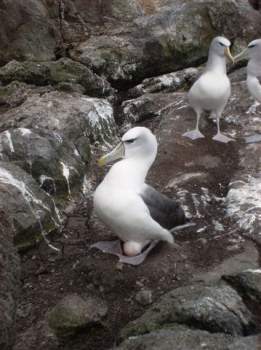Stephanie. Rowe (Marine Conservation Services Programme, Department of Conservation, New Zealand) reports on a workshop that assessed risk to seabirds from New Zealand fisheries.
The report’s abstract follows:
“A qualitative (Level 1) risk assessment was carried out to examine the potential impact of interactions with fisheries on seabirds in the New Zealand Exclusive Economic Zone (NZ-EEZ). A group of scientific and technical experts was established who assigned levels of exposure and consequence at a workshop. Uncertainty around the assessment was explicitly stated. In total, risk scores were assigned for 101 seabird taxa and 26 fishing methods. Thalassarche albatrosses (mollymawks), Procellaria petrels and large shearwaters were found to be at greatest national risk from fishing in the NZ-EEC. Other seabird species at risk from one or only a few fisheries included yellow-eyed penguins (Megadyptes antipodes), shag species, little blue penguins (Eudyptula minor), and Hutton’s and fluttering shearwaters (Puffinus huttoni and P. gavia). The setnet fishery was found to be posing the greatest risk to seabirds, followed by all longline fisheries, although the risk from the latter was lower when mitigation measures were in place and being used correctly. The results of this assessment can be used to identify what additional information is needed to provide more robust assessments of fishing risks to seabirds, allowing fishing impacts to be better managed in the future.”
White-capped Albatrosses breed only in New Zealand. Photograph by Matt Charteris
Reference:
Rowe, S. 2013. Level 1 risk assessment for incidental seabird mortality associated with fisheries in New Zealand’s Exclusive Economic Zone. DOC Marine Conservation Services Series No. 10. 58 pp.
John Cooper, ACAP Information Officer, 19 May 2013

 English
English  Français
Français  Español
Español 